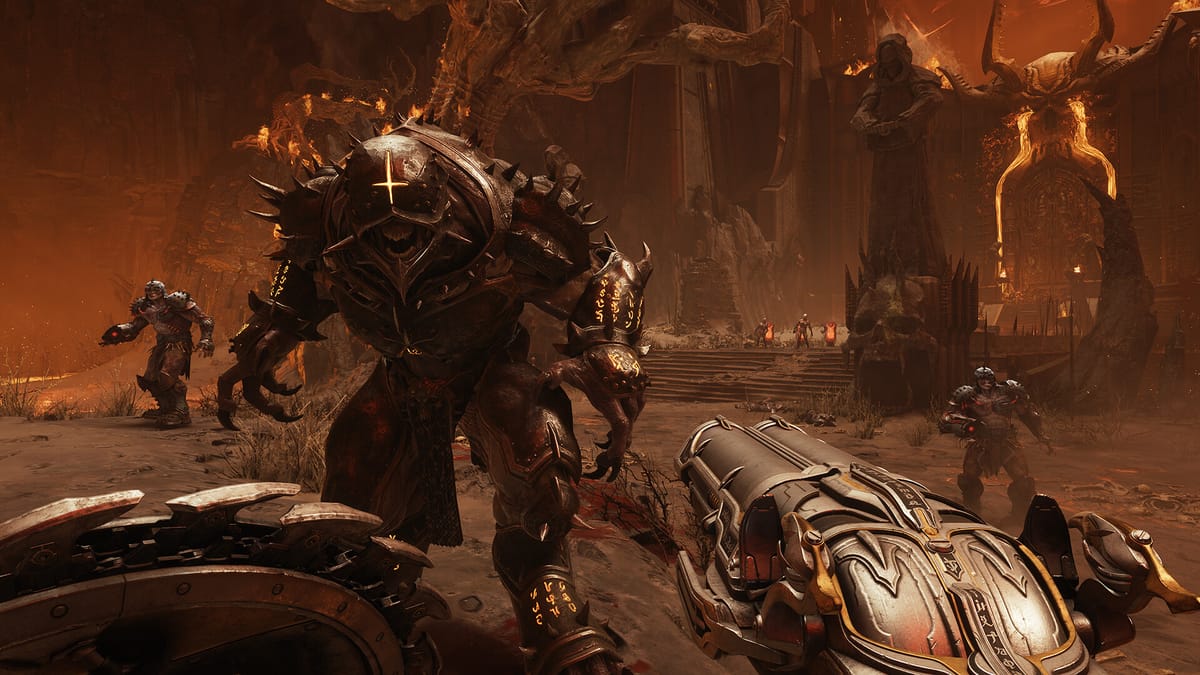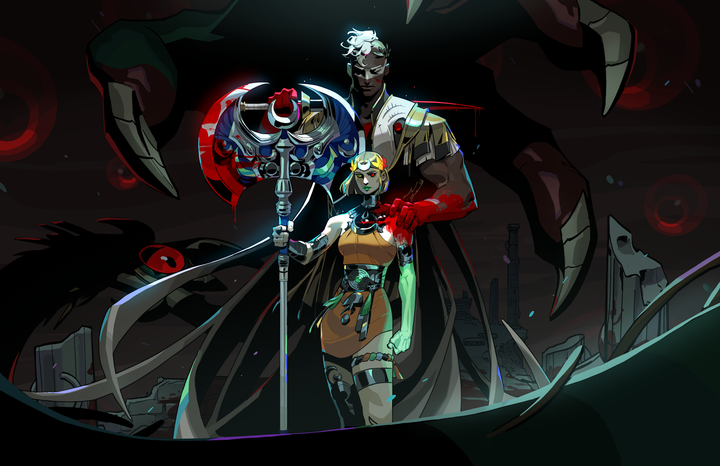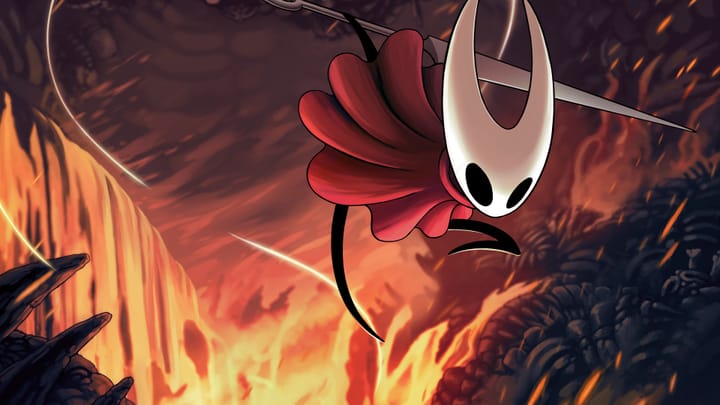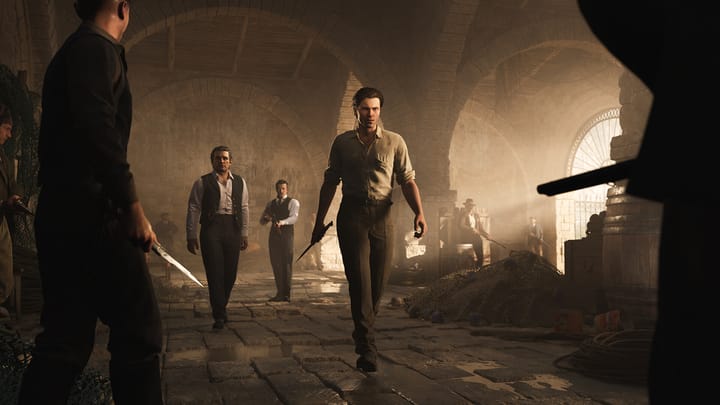Doom: The Dark Ages (Series X): Rip-oste and Teareth

The two previous Doom games (Doom (2016) and Doom Eternal) from id Software are brilliant examples of cohesive design. The 2016 reboot took what was, at that point, an oversaturated and homogenised genre (the first person shooter) and made it into something fresh. Why the genre works was maintained but key tenets were rethought (like, what if you didn't need to reload guns?). Everything was built around a combat flow state, a propulsive feeling, arcadey shooter that still had the limited exploration and discovery you expect out of a Doom game. Doom Eternal was divisive (I adored it) but even its detractors wouldn't deny a singularity of vision. The arcade, combat puzzle combat was ramped up to the nth degree: a deeply challenging shooter experience where interlinked mechanics forced you to use every tool in your arsenal to get by.
Doom: The Dark Ages places itself somewhat in the middle of the two previous games. The more open, exploration focused levels are more in line with 2016 than Eternal and the combat is less optimisation focused than Eternal. It moves the resource management a bit past 2016 but holds onto the idea in that game that you could favour certain weapons – rather than every weapon fulfilling a need. However, The Dark Ages also goes off in its own direction, finding a new combat flow and identity. The problem is, for the first time in this reboot series, it doesn't feel cohesive.
The setting is another novel element. This functions as a prequel to the first two games, which allows it to explore a unique aesthetic but, also indicates an initial flaw. That's right, this game is interested in lore and narrative. A shame, as the player will not be as, though the game might be interested, the content isn't interesting. 2016 had an immediacy to its storytelling, a tongue in cheek approach that laced in some broad capitalist critique. Cartoony stuff that was fitting and was a lovely panacea to the overly serious shooters of the time. Doom Eternal, however, started to take things very seriously and began the approach that Dark Ages doubles down on. There are a lot of characters, there's a lot of mythos and it is uniformly uninteresting. The game stops to tell you a story that feels alien to its style, making it persistently jarring. Dark Ages, even on a visual design level, feels like the worst narrative parts of Halo 2 – a lot of weird looking things talking in big rooms, a vague military force, the idea of you as a weapon used by that force, and interlacing factions. Add a lot of religious mumbo jumbo and... Maybe this actually is Halo 2. Or, just the weakest parts of it.
There's some negative cohesion here as the issues with narrative pacing are echoed in gameplay pacing. 2016 was a quick game, Eternal was lightning fast. The Dark Ages is still quick but it wants to feel heavy and deliberate. The big shift is that, instead of being maneuverable, you are now a walking tank. Your job is to endure, stand there and be aggressive. You can zip across the battlefield but only by doing a shield dash on a cool down. Most of the time, you're standing in the thick of battle and just making sure to deal more damage than you take. There is a lot of downtime, though. Between encounters, you have quite open levels to explore that are certainly inspired by the original Doom games (1 and 2, not 2016 and Eternal). Your map will show you where all the secrets are and you traverse the large expanse to get all those unlocks – often by getting colour coded keys and light puzzle solving. It's actually quite arduous. There's a wearisome size to the levels that kills the pacing. Being in the thick of combat is fun but starting a level, seeing that big map and the checklist of secrets really saps the energy. Moving around isn't expressive. While Eternal's platforming sections could be incredibly frustrating, this game illustrates their worth as a pacing aid. The energy of that game was maintained, the stressful decision making of combat replicated by intense platforming. Dark Ages just feels a bit limp. You get a repose from combat but you don't seek that repose. The levels just aren't very interesting, are often frustratingly obtuse and the rewards from exploration frequently not worthwhile. There's no joy in actually finding stuff – mostly because movement isn't inherently engaging anymore – so it feels like a lot of wasted space.
I was doing everything and then, three-quarters in, I just stopped. Searching for secrets is just padding and bloat. The game's list of twenty-two levels felt more like a threat than an invitation. When you don't engage with collectibles, you can just run through levels very quickly and it's very fun. A linear approach does, at points, brush up against the level design (it wants you to poke around so getting from A to B without fulling exploring A feels disjointed). You are left with liminal space between combat but it is far better to just focus on the combat. Because, eventually, this is the one place where the flow state is achieved again. The big new mechanic is that you have a shield. To start with, you cant just block certain attacks with it to soak up damage. It has a health bar, to add a bit of resource management, but you are still encouraged to be in the thick of it. Soon, you can use your shield to parry certain attacks (anything that glows green); throw your shield like Captain America and use devastating melee attacks. Different moves available to you give you different resources: melee an enemy to get ammo; kill an enemy to get health; set them on fire to get armour; parry attacks to recharge your melee attack. There's a clear loop and it's added to in smart ways. It is added to too slowly, though. For the majority of the game, fighting is excellent. However, the first couple of hours (maybe a touch more) feel disjointed and dull. You don't have enough parts that make the combat work.
The parry, for example, feels like an interruptive mechanic. When the game eventually throws everything at you, you realise it's less a parry and more a kind of timed attack. When green hits you, hit a button – with (on the default difficulty) a very generous window. It is not about being precise, it's just another mechanic that lets you be right in the middle of the fight – which is a cool place to be. Admittedly, parrying works better against projectiles than with melee. The game should lean more into the bullet hell approach (making it more Ikaruga than Sekiro). The final boss is a perfect example of the limitations of the melee parry. You fight an enemy across two levels in multiple stages that just means you do the exact same thing six times. As they hit you, you parry until they get stunned, you then melee attack. You do this until the lifebar depletes. When it's one tool of many in wider combat, the parry feels excellent. It's a thing you can do to turn the tides and to keep those resources full. It allows the game to have really large battles where you plough through hordes as they keep coming. One on one combat is bad. That boss may have a variety of moves but the way you deal with any of them is all the same. You do the thing until the boss is over. No real feel of danger, nothing really engaging.
In so many ways, it's a disappointing step away from what made Doom Eternal so interesting. That game had a flow chart approach to combat, where you (as a player) would work out the thing to do to respond to everything it threw at you. Combat was both expressive and reactive, making you strategise on the go in wonderfully stressful firefights. The Dark Ages is a bit more staccato in its rhythm, a touch syncopated, perhaps. Here, the answer is often a super shotgun to the face — which is still quite compelling. It is just that the broader mechanics don't really fit together. Each weapon has an extensive upgrade tree that takes up multiple currencies (quite a chore) but the ways weapons upgrade doesn't make the most of what combat offers. A lot of them set up combos and very specific synergies in a game that has a combat pace that isn't built around deliberate strategising. The fun of The Dark Ages is surviving against the odds, just an all out onslaught of aggression where you win through persistence. I found myself using, at most, three weapons. Partly because most of the weapons aren't that fun, partly because the upgrade economy forces you to favour certain guns (which is a choice, not a flaw) but mostly because it didn't feel it mattered. The very basic core of gun, melee, shield works very well. A lot of the additional layers feel pointless – or are given to you too late. Eventually, you get runes that make your parry do another attack (I favoured the one that had a gun turret pop out and add an extra onslaught). This layer fits so well into the rhythm, and takes way too long to be added. Too many things just don't quite feel cohesive.
To add to this, we now also have mech levels and levels where you fly on a dragon. It is more forced variety, more forced pacing, that actually negatively impacts the overall game. Both of these level types maintain the parry system and both feel weird. Being in the mech is actually very dull. You dodge away from green attacks with ease and spam the right trigger against the same enemies. The levels are open and pointless, you wander through and engage in the same combat encounter in the same way. Punch and dodge while you fill up a meter, then use that meter for more powerful attacks. There's no dynamism, no interesting variety and the one thing you do isn't inherently enjoyable. It's just rote. The flying dragon parts are better but still feel repetitive. They are cool because you can fly around large levels, open up landing zones and then seamlessly transition to on foot levels. Though, this is mostly good as an excuse to get back to on foot levels. The dragon stuff is as repetitive and simplistic as the mech stuff, it just looks a bit more interesting and it feels better to fly a dragon than it does walk around empty maps in a mech suit.
The Dark Ages takes a step back for every step forward. The aesthetic is a fun blend of medieval fantasy and sci-fi but is also overly repetitive and held back by the boring lore. Combat keeps you in the thick of the fight in such an exciting way, but then can suddenly feel out of tune and is paced out poorly. When you are not fighting, a lot of the game is just evident padding. However, the propulsive combat flow is enough to warrant a clear recommendation. The feel of being in the middle of a giant fight where you can hold your own because you know how to balance systems, that's great. It being more intuitive and immediate than the stop start strategy of Eternal plays to a different kind of satisfaction. For me, it doesn't work quite as well but it's still great. It's a real shame, then, that the overall design feels so scattershot.





Comments ()